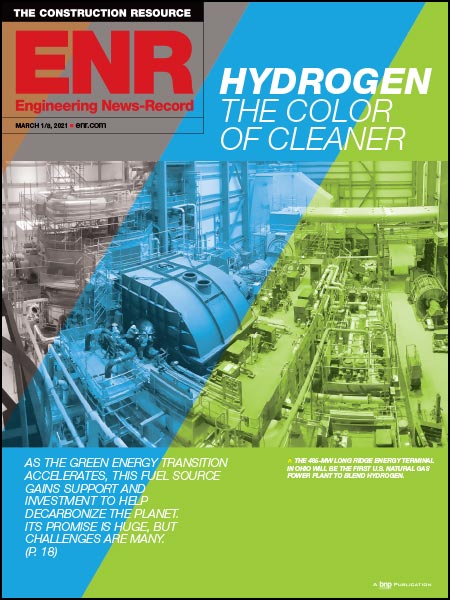Although designs by the joint venture of NBBJ, Seattle, and Blitch Knevel Architects, New Orleans, were not created with a specific prefabrication strategy in mind, the design is flexible enough to accommodate it, says Mackenzie Skene, an NBBJ partner. The firm builds prefabrication into much of its basic design to cut waste and boost quality and safety.
For a project like this, speed and efficiency were critical. "You can work on two [jobs] simultaneously and then plug them in when the building is ready," Skene says. "It's a tremendous opportunity to get a jump on those things."
Tight Schedules
It's no easy task to manage a project with 1,500 workers, 20,000 schedule activities and 515 bid packages. Skanska currently has 82 employees from its Georgia, North Carolina and Florida offices on site managing subcontractors. Each of the five buildings has its own superintendents and project management team, essentially acting as stand-alone projects. Easterwood oversees building superintendents who manage their own schedules, quality control and safety.
"They manage their buildings as if [each] was a separate project," Easterwood says. "I manage them and spend my days going where the fires are. I don't plan a single day because every day is different."
Clemmensen says one of the job's first challenges was procuring work on such a large project. State officials set no hard requirements but wanted Skanska to ensure the project would use as many local contractors and as much local labor as possible, he says. To accomplish that, state officials divided the bid packages into as many small pieces as possible. In many cases, bids for the same services were split up between buildings. In addition to the pressure of dealing with so many contracts, Skanska also had a goal of procuring the job in only 120 days.
"Just to go through that process for so many packages in such a short period of time, we had over 40 people working on it," says Clemmensen. "It was a huge effort."
In such a large project with so many moving prefabricated parts, Austin says technology has been critical to increase efficiency and maintain quality control. Skanska is using more than a dozen digital resource centers—steel pods with high-powered computers and large monitors—that allow superintendents to access all of the latest designs and other information. The centralized technology approach eliminates the need for paper and human exertion to find needed project detail.
Big Plans
When completed, the University Medical Center will be one of the largest hospital campuses of its kind in the country. Facilities include a 560,000-sq-ft hospital with 424 beds; a 747,000-sq-ft diagnostics and treatment center; a 255,000-sq-ft ambulatory care building; and a 546,000-sq-ft parking garage for 1,400 cars.








